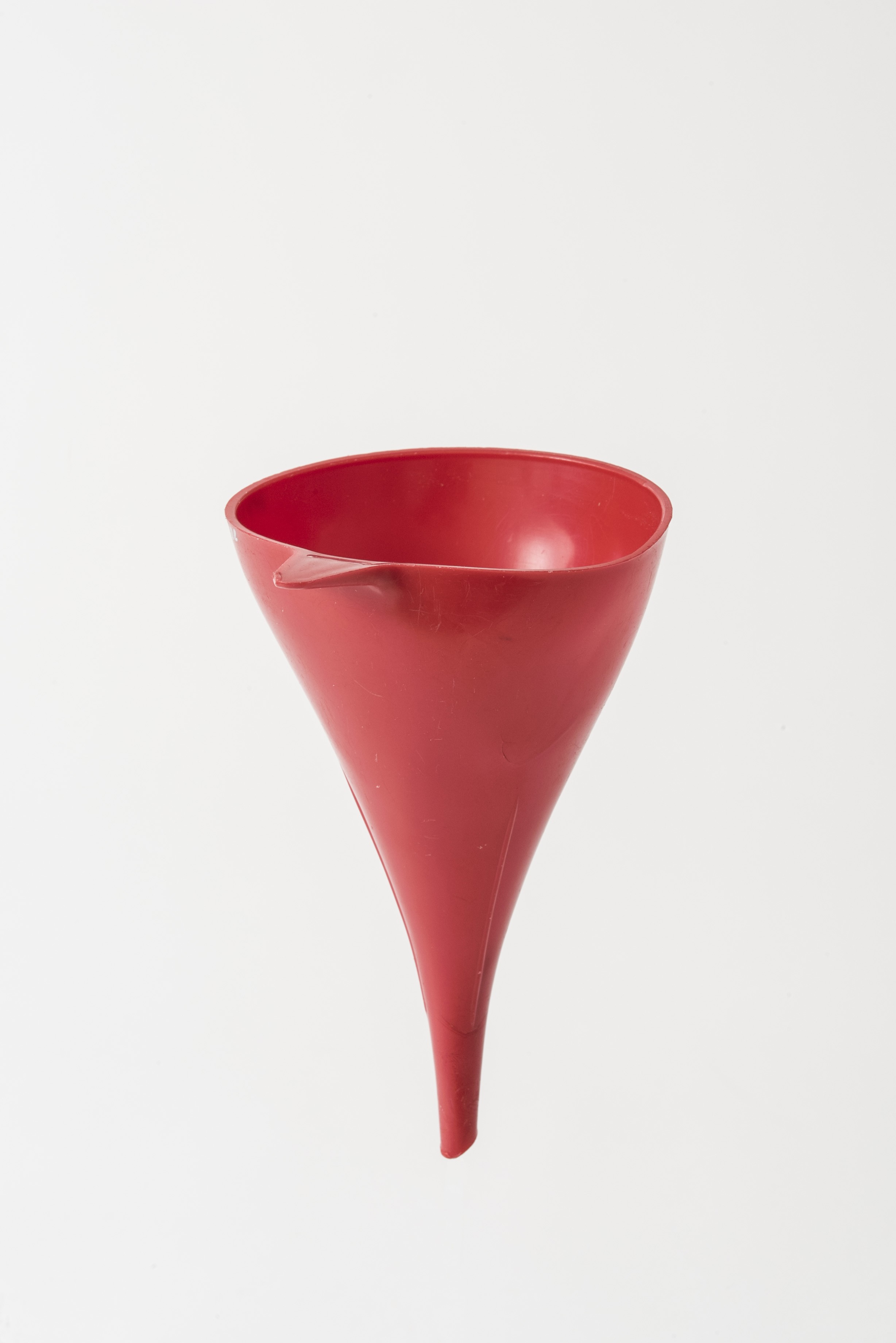Der fließende und gleichsam tropfenförmige Umriss des Trichters versinnbildlicht das Hinabströmen der Inhaltsstoffe und ist damit Ausdruck seiner Funktion.
An der Seite des roten Trichters aus dem Kunststoff Polyethylen geht der Rand in einen flachen dreieckigen Griff über. Der Trichter war in verschiedenen Größen und Farben erhältlich.
en

